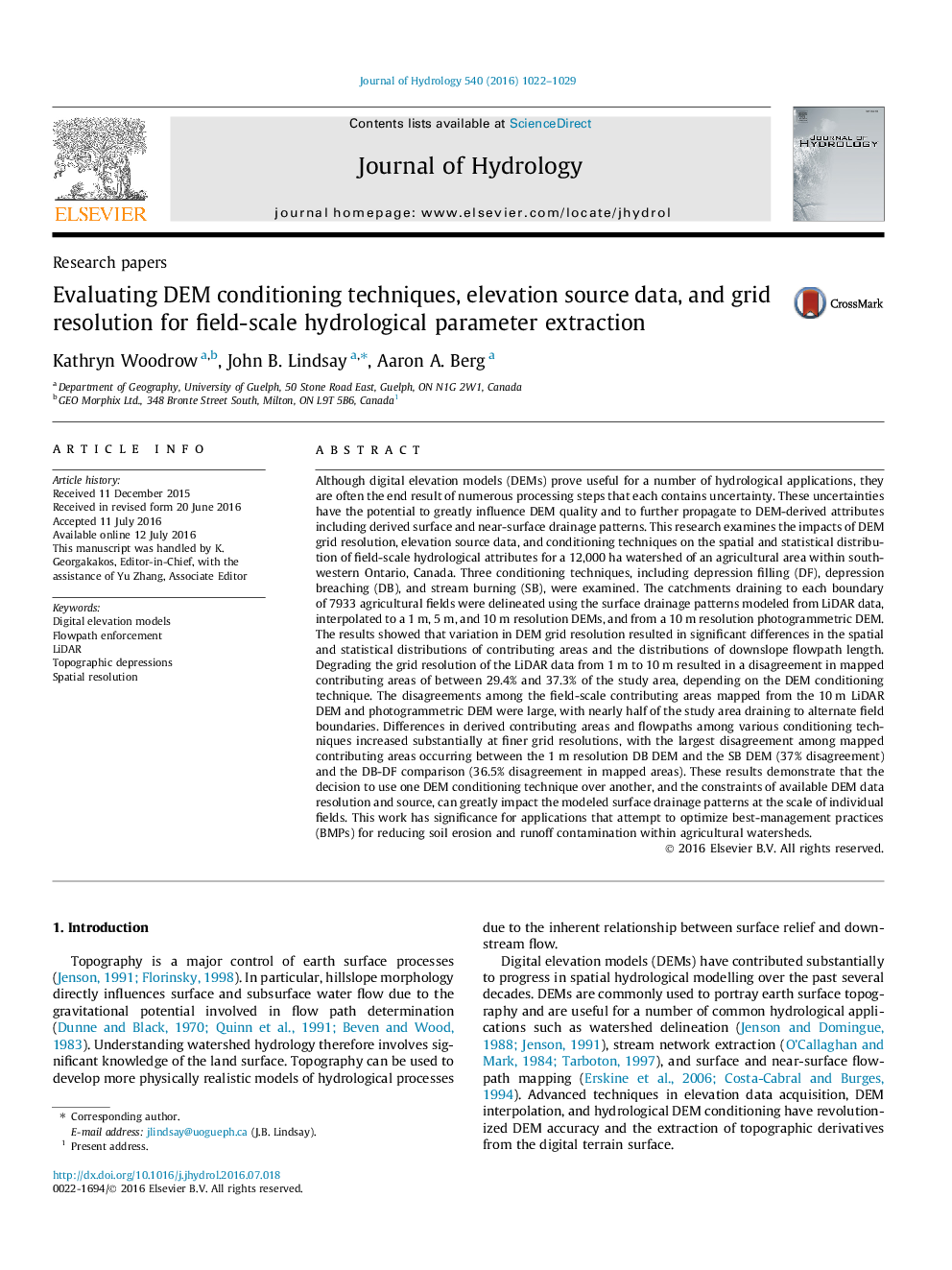| کد مقاله | کد نشریه | سال انتشار | مقاله انگلیسی | نسخه تمام متن |
|---|---|---|---|---|
| 6409676 | 1629912 | 2016 | 8 صفحه PDF | دانلود رایگان |

- Within-field catchments were mapped from LiDAR and photogrammetric DEMs.
- Varying resolution and source resulted in large differences in drainage patterns.
- Conditioning methods affected drainage patterns the greatest at fine resolutions.
- This affects BMP optimizations that rely on accurate field-scale drainage mapping.
Although digital elevation models (DEMs) prove useful for a number of hydrological applications, they are often the end result of numerous processing steps that each contains uncertainty. These uncertainties have the potential to greatly influence DEM quality and to further propagate to DEM-derived attributes including derived surface and near-surface drainage patterns. This research examines the impacts of DEM grid resolution, elevation source data, and conditioning techniques on the spatial and statistical distribution of field-scale hydrological attributes for a 12,000Â ha watershed of an agricultural area within southwestern Ontario, Canada. Three conditioning techniques, including depression filling (DF), depression breaching (DB), and stream burning (SB), were examined. The catchments draining to each boundary of 7933 agricultural fields were delineated using the surface drainage patterns modeled from LiDAR data, interpolated to a 1Â m, 5Â m, and 10Â m resolution DEMs, and from a 10Â m resolution photogrammetric DEM. The results showed that variation in DEM grid resolution resulted in significant differences in the spatial and statistical distributions of contributing areas and the distributions of downslope flowpath length. Degrading the grid resolution of the LiDAR data from 1Â m to 10Â m resulted in a disagreement in mapped contributing areas of between 29.4% and 37.3% of the study area, depending on the DEM conditioning technique. The disagreements among the field-scale contributing areas mapped from the 10Â m LiDAR DEM and photogrammetric DEM were large, with nearly half of the study area draining to alternate field boundaries. Differences in derived contributing areas and flowpaths among various conditioning techniques increased substantially at finer grid resolutions, with the largest disagreement among mapped contributing areas occurring between the 1Â m resolution DB DEM and the SB DEM (37% disagreement) and the DB-DF comparison (36.5% disagreement in mapped areas). These results demonstrate that the decision to use one DEM conditioning technique over another, and the constraints of available DEM data resolution and source, can greatly impact the modeled surface drainage patterns at the scale of individual fields. This work has significance for applications that attempt to optimize best-management practices (BMPs) for reducing soil erosion and runoff contamination within agricultural watersheds.
Journal: Journal of Hydrology - Volume 540, September 2016, Pages 1022-1029